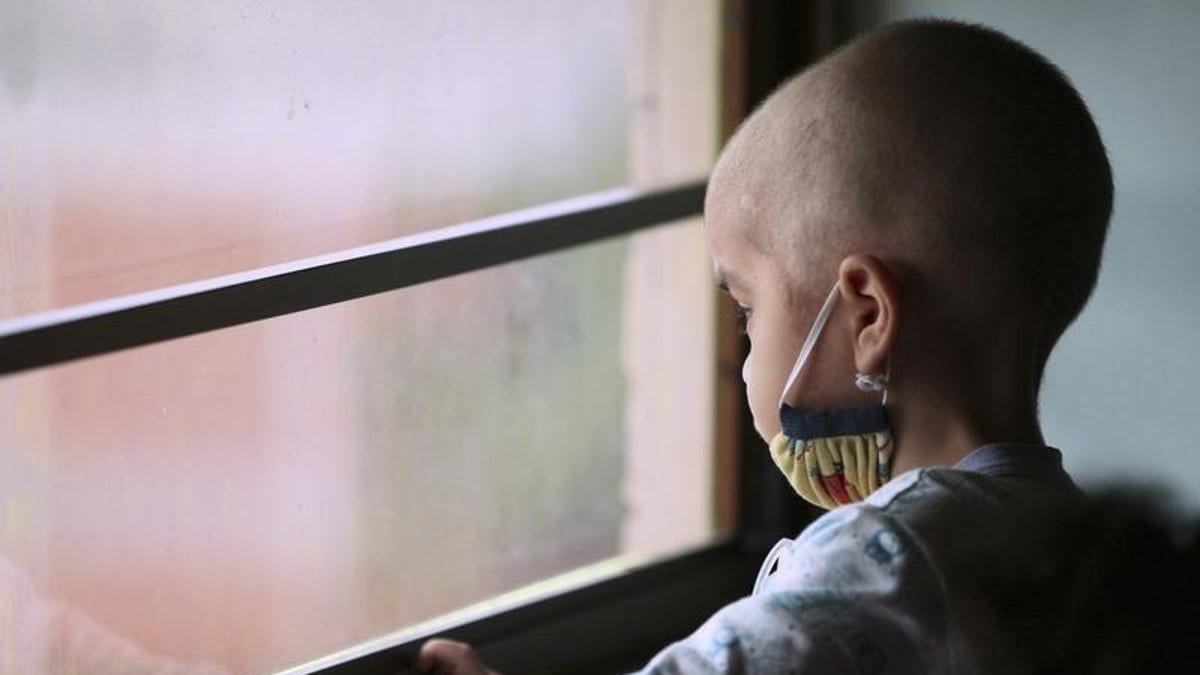
Manuel Andres Sequera, 2, looks out the window while receiving chemotherapy treatment at a paediatric hospital in Maracaibo, Venezuela. November 29, 2011. REUTERS/Isaac Urrutia (Copyright Reuters 2016)
It's long been known that cancer survivors -- people alive five years after diagnosis -- face a higher risk of premature death, and doctors have made efforts over the decades to reduce those deaths.
A new study of childhood cancer cases suggests that the effort has been successful, at least to some degree.
Most people "kind of assume that if you hit the five-year time point, you've beaten your cancer and the story's over," chief author Dr. Gregory Armstrong of St. Jude Children's Research Hospital in Memphis told Reuters Health by phone. "I think the first thing this paper does is show on a national scale that beyond five years there's a very significant risk of mortality. That should be a big wakeup call for most of the primary physicians who are taking care of these patients."
"At the same time," he said, "this paper comes along and shows the good news part of the story - modern survivors are doing better, even though they still have an elevated risk of mortality compared to the general population."
The study was published online in the New England Journal of Medicine.
The analysis of 34,033 patients whose cancers were diagnosed before age 21 and who survived to the five-year mark found that the odds of death from any cause, including due to a recurrence or progression of a cancer, declined for children treated in the 1980s compared to those treated in the 1970s.
When treatment was initiated in the 1990s, the death rates were lower still.
For survivors diagnosed in the 1970s, the odds of death at the 15-year mark were 10.7%. With treatment in the 1980s, the rate declined to 7.9%. For the 1990s it was 5.8%.
When the researchers looked exclusively at death from recurrence or progression of the cancer, the death rates at 15 years were 7.1% for treatment in 1970s, 4.9% for the 1980s and 3.4% for the 1990s.
Changes in the way radiation and chemotherapy are delivered, along with better follow-up care, are believed to be responsible.
"What we had hoped was it would ultimately increase their lifespan and the risk for late mortality," said Dr. Armstrong. "In fact, it did."
The improvement underscores the dramatic gains in pediatric cancer therapy seen since the 1960s, when fewer than half of children diagnosed with cancer survived for five years. The rate is now 83%.
The new findings are based on data collected for the Childhood Cancer Survivor Study covering children treated at 31 institutions in the U.S. and Canada.
Half the patients in the study were tracked for at least 21 years. Overall, 3,958 cancer survivors had died; 2,002 had succumbed to a recurrence or progression of their initial cancer. Another 746 died from developing a different type of cancer.
The researchers also measured the rate of death from all other health-related causes, a category that included deaths from heart and lung problems. Those death rates were 3.1% for people treated in the '70s, 2.4% in the '80s and 1.9% in the '90s.
"The 2000s ought to bring even more marked improvements because we've seen new technologies and new deliveries of radiation therapy, and better and more appropriate use of chemotherapy, along with a reduction in certain chemotherapies that cause toxicity," Dr. Armstrong said.
SOURCE: http://bit.ly/1Q0IzJ6 The New England Journal of Medicine, online January 13, 2016.
